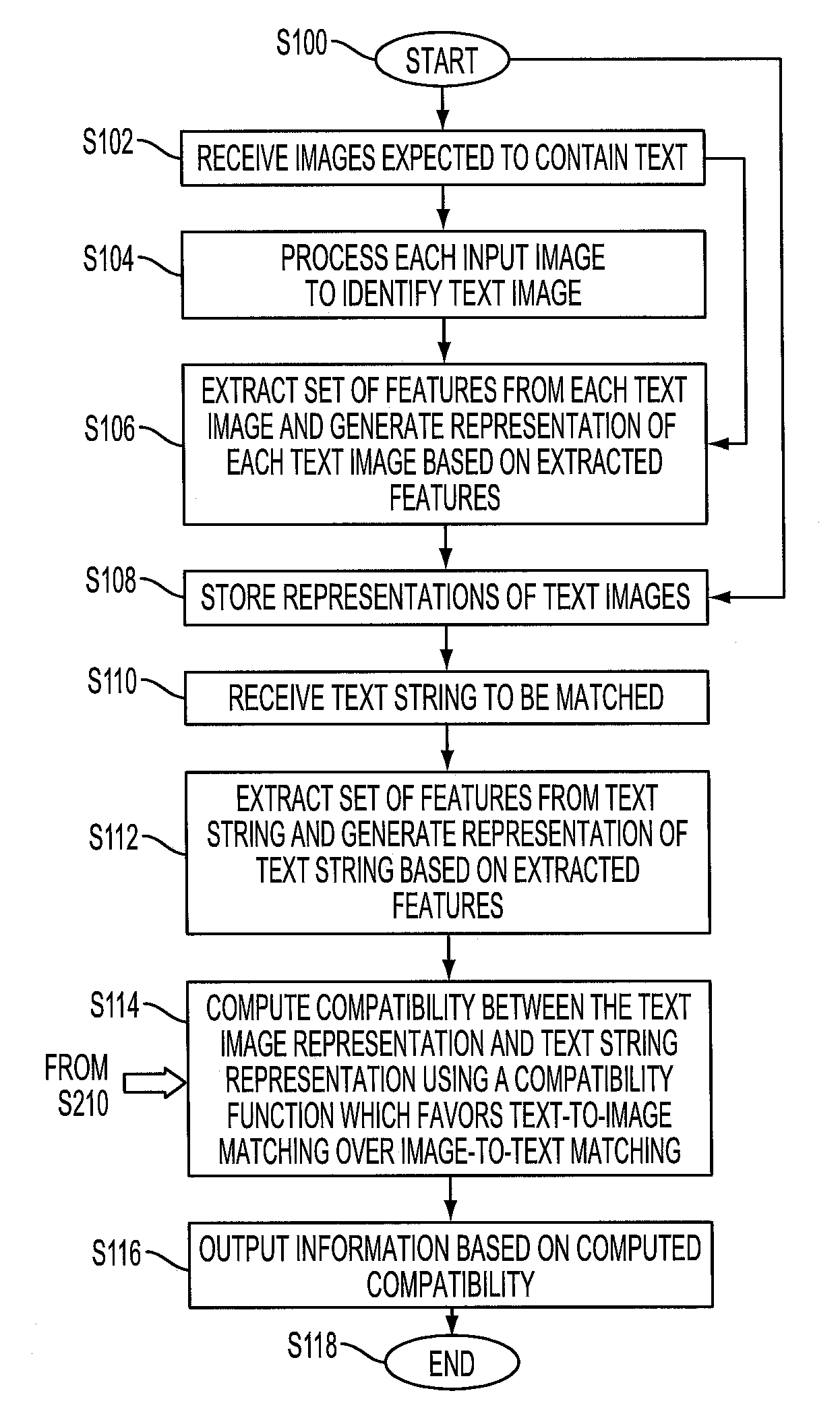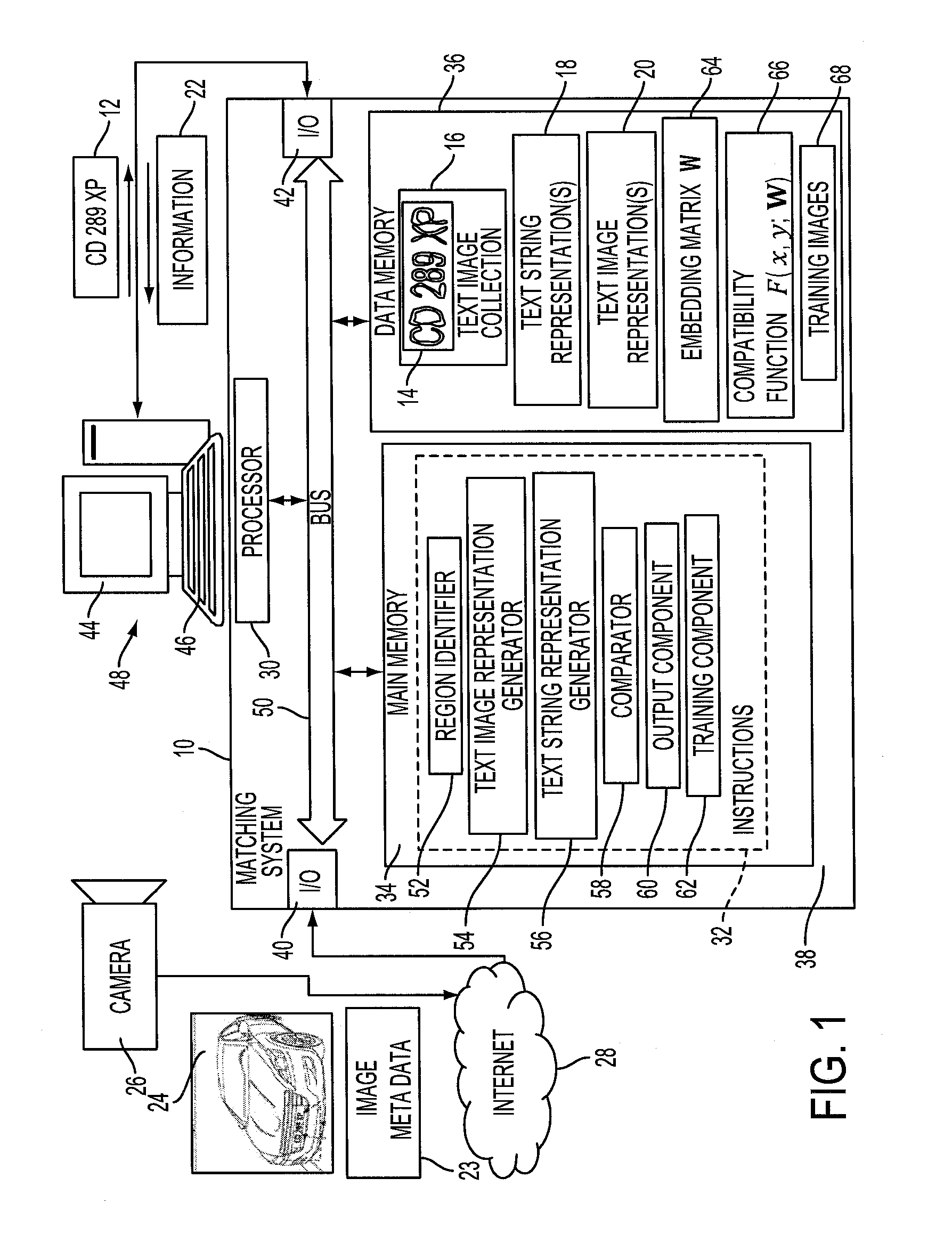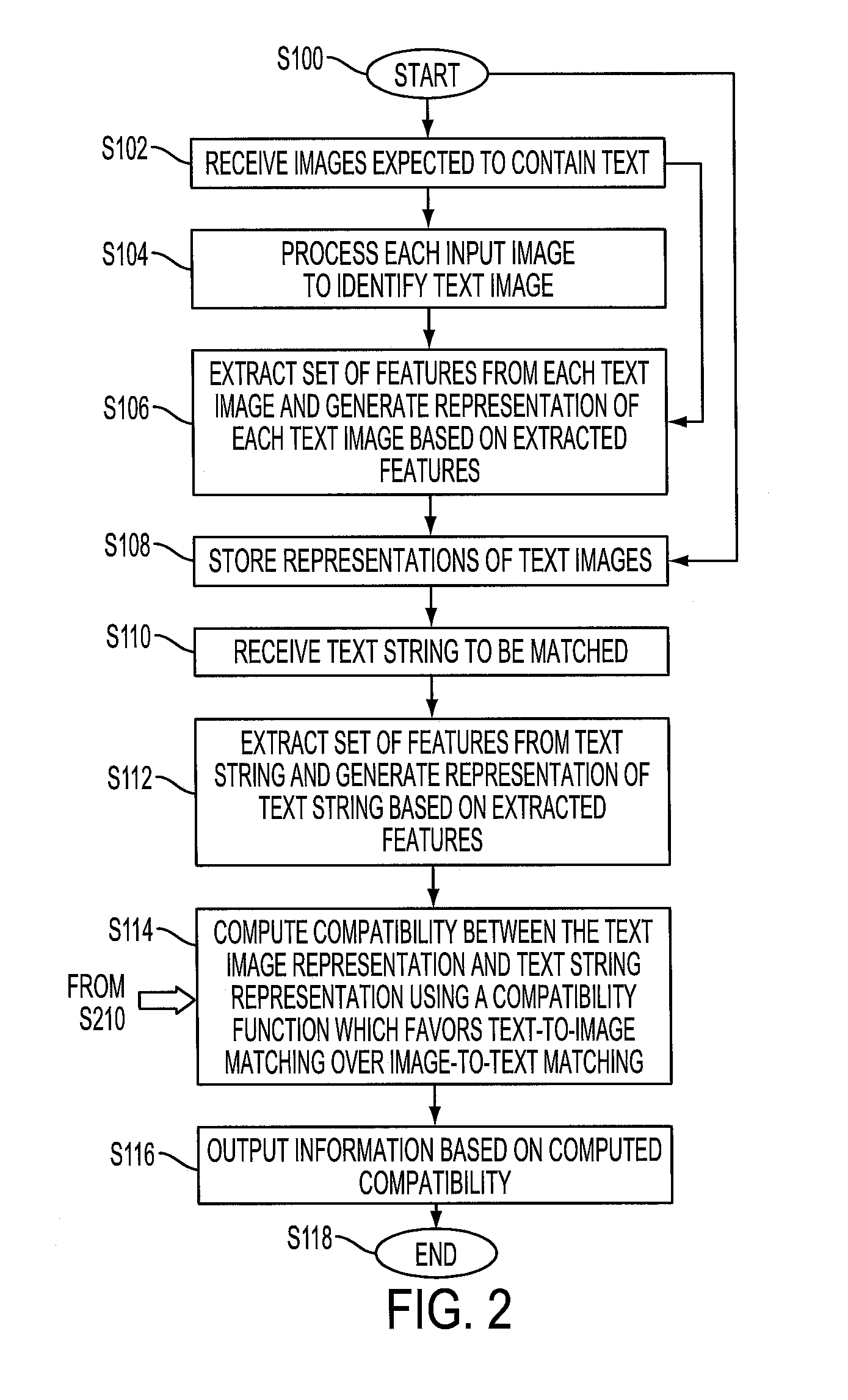Privacy-preserving text to image matching
a text matching and privacy-preserving technology, applied in the field of matching text to images, can solve the problems of providing unauthorized information, difficult image-to-text matching, and system uselessness
- Summary
- Abstract
- Description
- Claims
- Application Information
AI Technical Summary
Benefits of technology
Problems solved by technology
Method used
Image
Examples
examples
[0138]The three approaches described above were compared on a dataset of license plates. The dataset contains 4,215 images for training and validation purposes and 4,215 images for testing purposes. Each image is associated with its textual transcription (label). Images are encoded using a Fisher Vector representation (64 Gaussians per mixture, gradients with respect to the mean vectors only) over densely extracted SIFT descriptors reduced to 32 dimensions with PCA. A 2×4 spatial pyramid was used, leading to a total of 32×64×4×2=16,384 dimensions. The text strings are encoded using a spatial pyramid of characters as described above, with an alphabet of 36 symbols ={A, . . . , Z, 0, . . . ,9} and 4 levels in the SPBOC, leading to a total of (1+2+4+8)×36=504 dimensions.
[0139]When learning the similarity functions, a maximum of 10,000 epochs was considered, although most approaches converged significantly before that. When performing the stochastic update, a constant step size of η=1×1...
PUM
 Login to View More
Login to View More Abstract
Description
Claims
Application Information
 Login to View More
Login to View More - R&D
- Intellectual Property
- Life Sciences
- Materials
- Tech Scout
- Unparalleled Data Quality
- Higher Quality Content
- 60% Fewer Hallucinations
Browse by: Latest US Patents, China's latest patents, Technical Efficacy Thesaurus, Application Domain, Technology Topic, Popular Technical Reports.
© 2025 PatSnap. All rights reserved.Legal|Privacy policy|Modern Slavery Act Transparency Statement|Sitemap|About US| Contact US: help@patsnap.com



